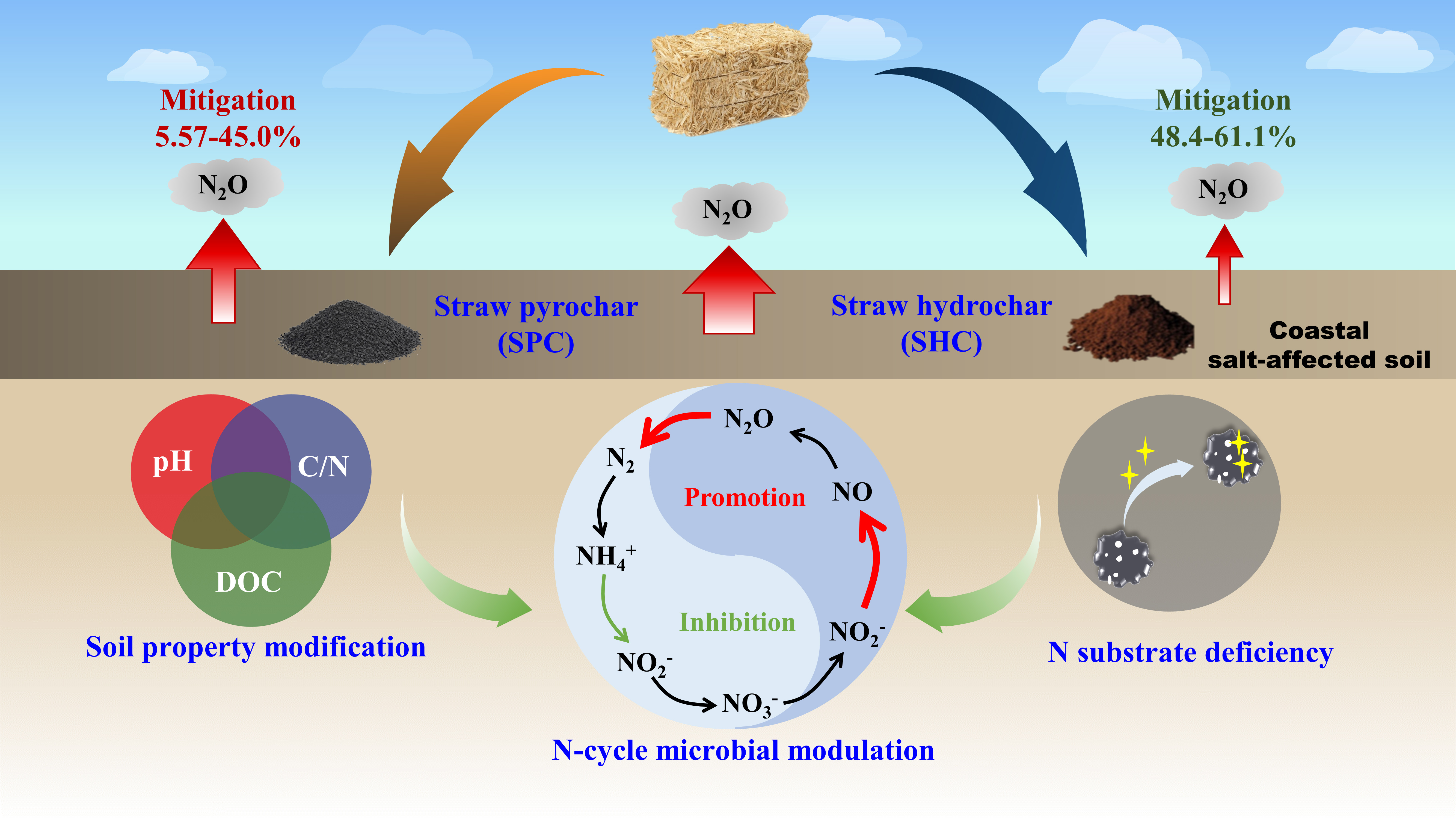
Links
Hydrochar more effectively mitigated nitrous oxide emissions than pyrochar from a coastal soil of the Yellow River Delta, China
Recently, the innovation team of coastal saline-alkali land biological resources evaluation and utilization of Tobacco Research Institute, Chinese Academy of Agricultural Sciences has made progress in reducing nitrous oxide (N2O) emissions from coastal saline-alkali land soil by returning biomass to fields. Relevant research results were published in Science of the Total Environment (JCR Q1, IF2021=10.753).
Abstract
Application of char amendments (e.g., pyrochar or biochar, hydrochar) in degraded soils is proposed as a promising solution for mitigating climate change via carbon sequestration and greenhouse gases (GHGs) emission reduction. However, the hydrochar-mediated microbial modulation mechanisms underlying N2O emissions from coastal salt-affected soils, one of essential blue C ecosystems, were poorly understood. Therefore, a wheat straw derived hydrochar (SHC) produced at 220°C was prepared to investigate its effects on N2O emissions from a coastal salt-affected soil in the Yellow River Delta and to distinguish the microbial regulation mechanisms in comparison with corresponding pyrochar pyrolyzed at 500°C (SPC) using a 28-day soil microcosm experiment. Compared with SPC, the acidic SHC (pH 4.15) enriched in oxygenated functional groups, labile C and N constituents. SHC application more efficiently depressed cumulative soil N2O emissions (48.4–61.1 % vs 5.57–45.2 %) than those of SPC. SHC-induced inhibition of ammonia-oxidizing gene (amoA)-mediated nitrification and promotion of full reduction of N2O to N2 by nitrous oxide reductase gene (nosZ) were the underlying microbial mechanisms. Structural equation models further revealed that SHC-modulated bacterial N-transformation responses, i.e., inhibited nitrification and promoted heterotrophic denitrification, mainly contributed to reduced N2O emissions, whereas modification of soil properties (e.g., decreased pH, increased total C content) by SPC dominantly accounted for decreased N2O emissions. These results address new insights into microbial regulation of N2O emission reduction from the coastal salt-affected soils amended with hydrochar, and provide the promising strategies to enhance C sequestration and mitigate GHG emissions in the blue C ecosystems.
